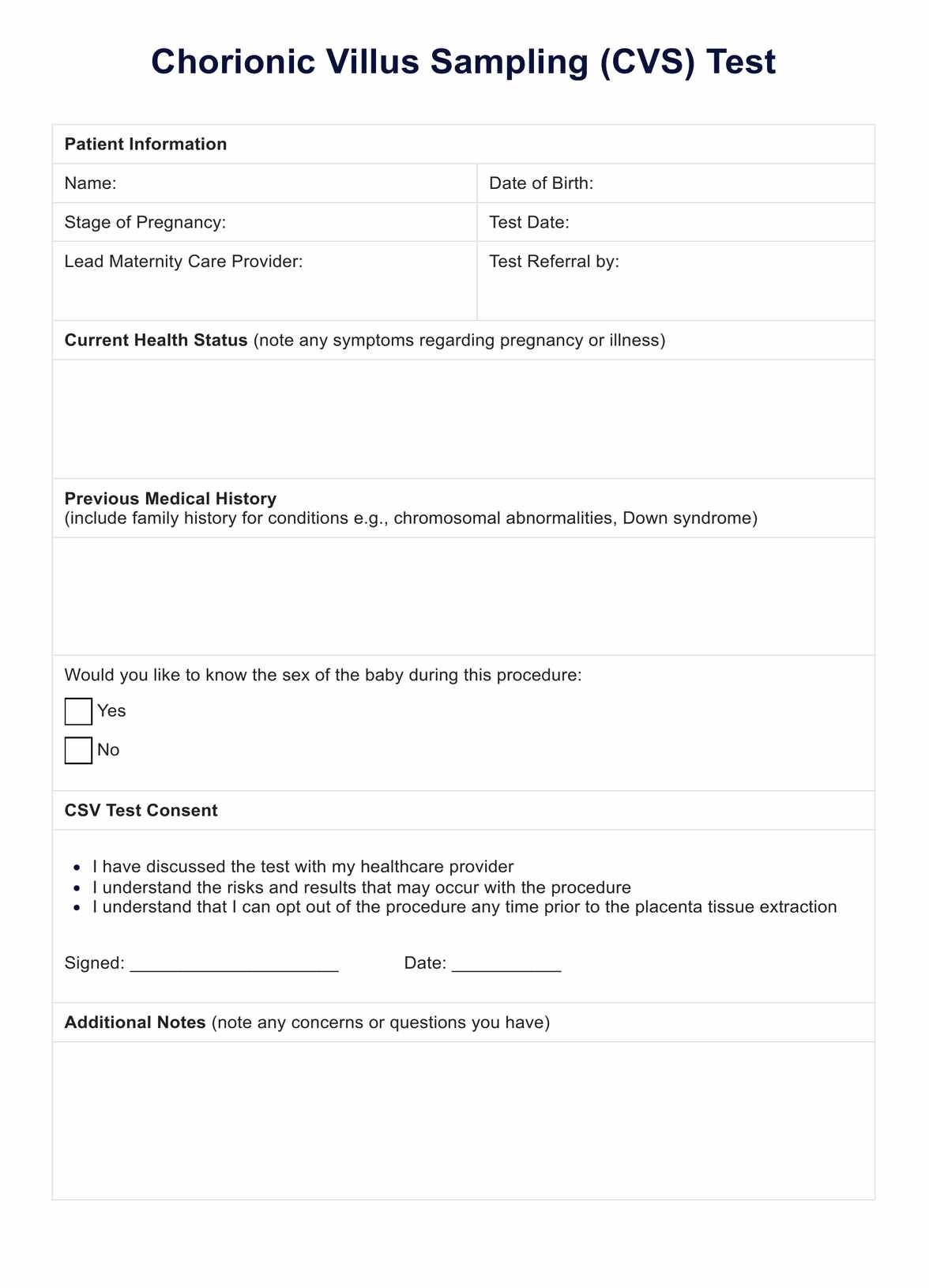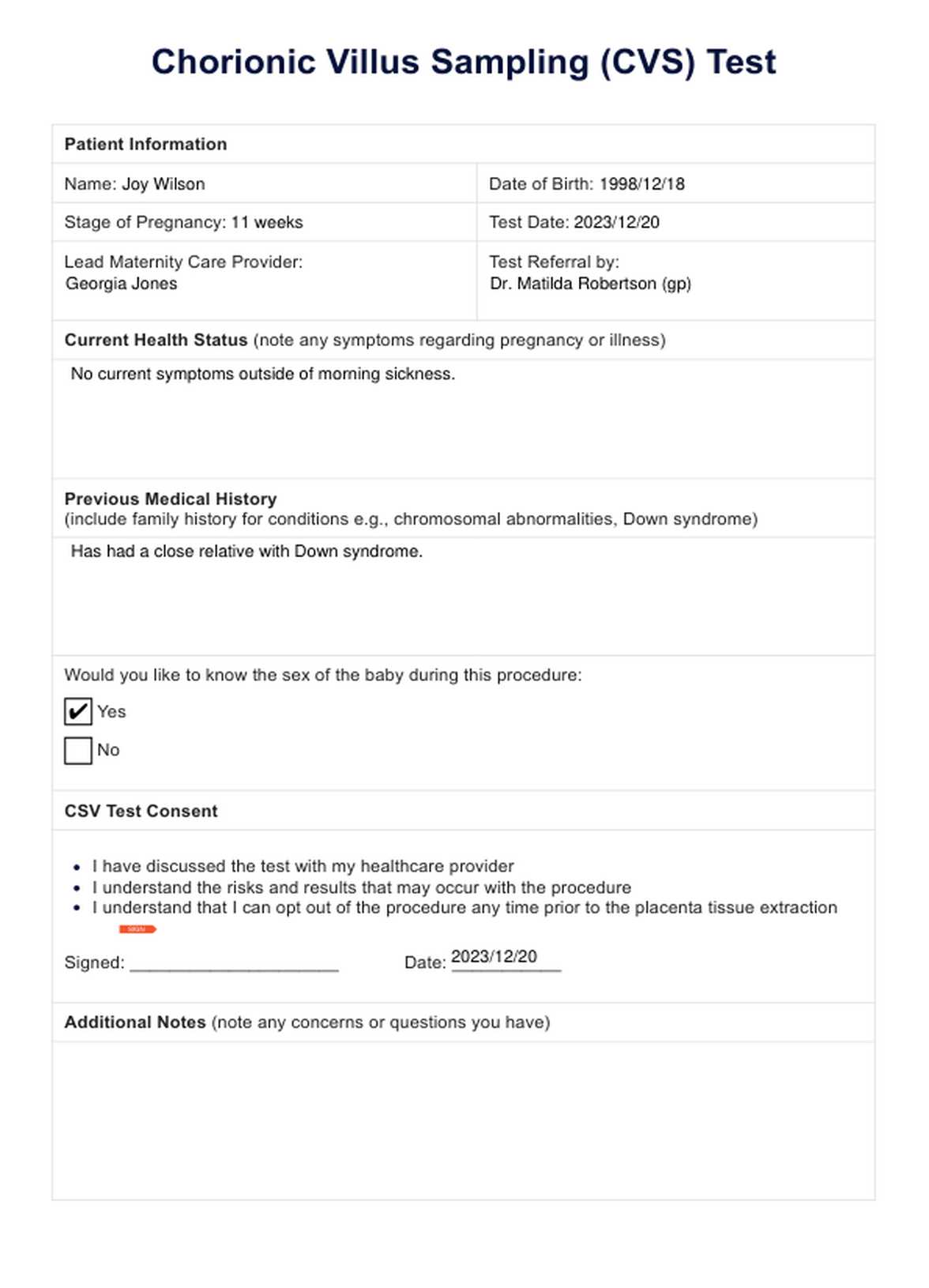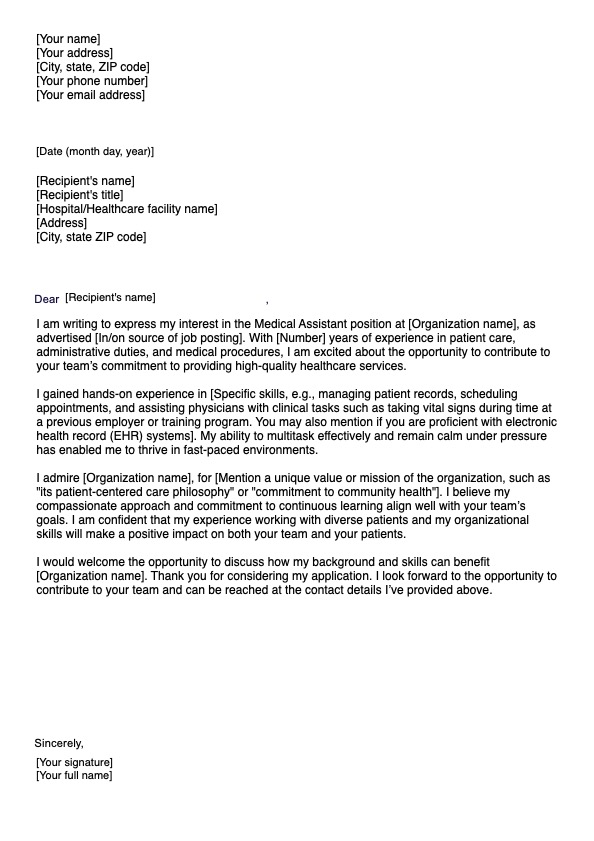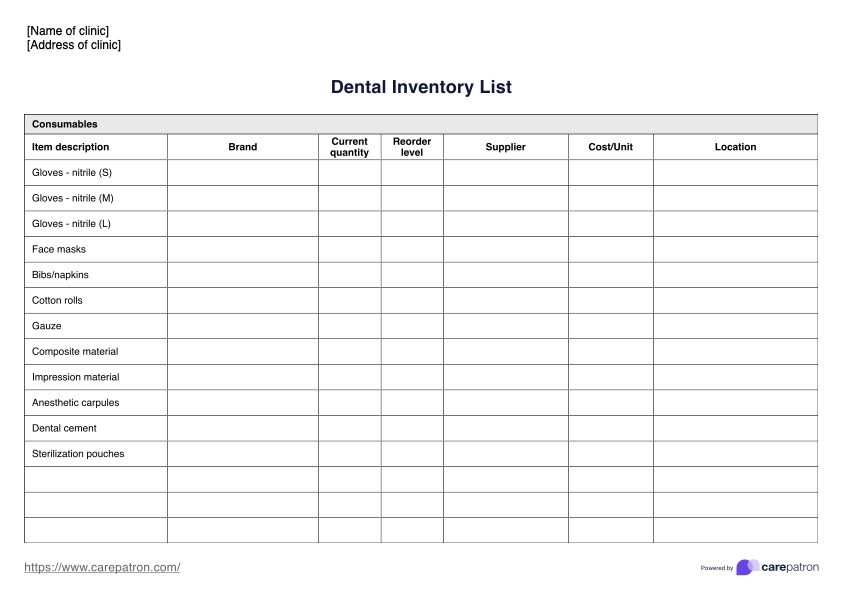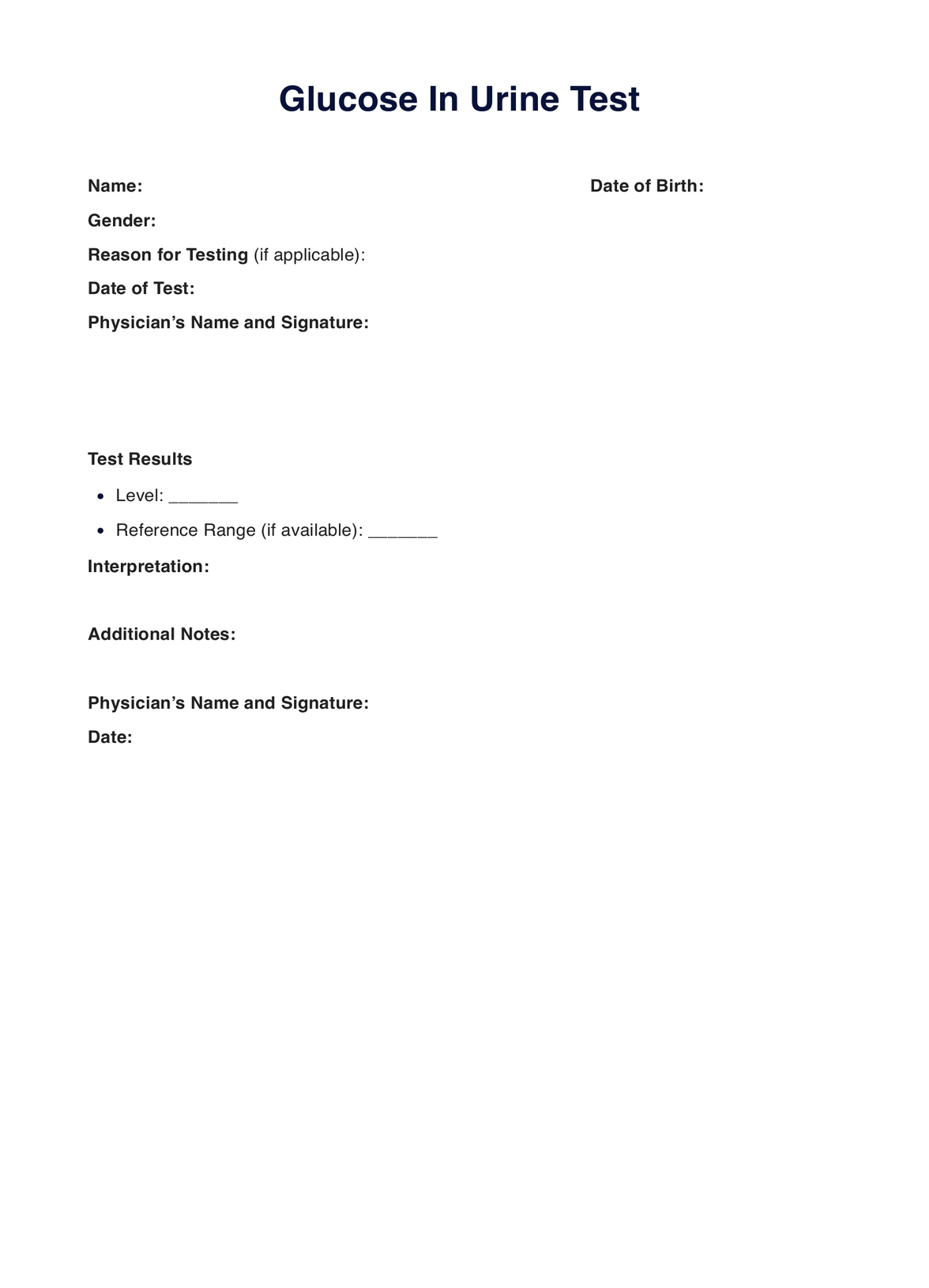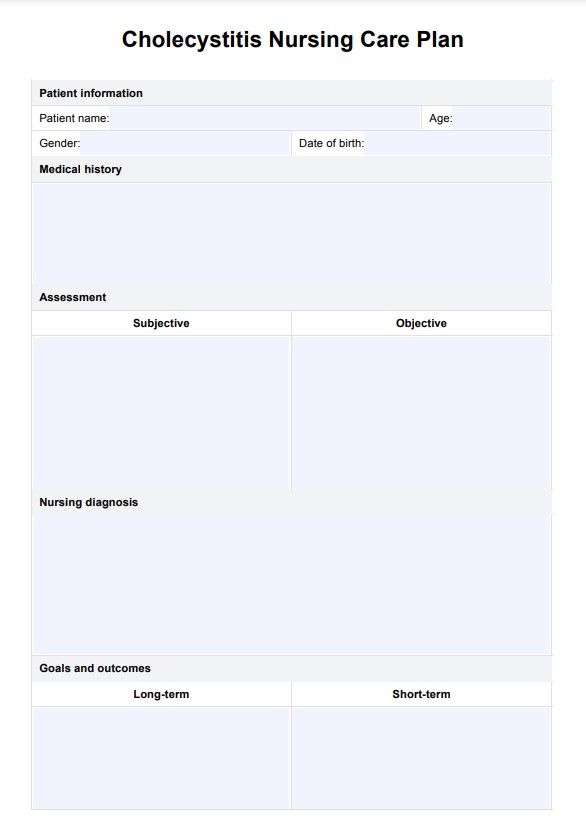Chorionic Villus Sampling (CVS) Pregnancy Test
Learn more about chorionic villus sampling (CVS) and how it may be important to ensure the health of yourself and your baby during pregnancy.


What is a Chorionic Villus Sampling (CVS) Test?
A chorionic villus sampling (CVS) test is a prenatal test for diagnosis of chromosomal defects and other genetic abnormalities such as Down syndrome. The test involves extracting a tissue sample from the placental tissue, usually occurring between weeks 10 and 12 during pregnancy. CVS testing is conducted upon referral from health practitioners, such as general practitioners and midwives, for pregnant women who may be at risk of giving birth to a baby with genetic defects.
The placenta is the pregnancy organ that provides blood supply and ongoing nourishment to the unborn baby. This prenatal testing requires placental tissue, formed by chorionic villi projections. These chorionic villi are thread-like structures developed during fertilization, usually containing the same genes as the fetus.
There are two ways a practitioner may conduct a CVS test:
- Transcervical testing inserts a catheter through the vaginal opening, using ultrasound scanning to move the device toward the placenta to gather chorionic villus samples.
- Transabdominal testing uses ultrasound scanning to insert a thin needle through the abdomen and cervix towards the placenta, gathering a small sample. This procedure may involve local anesthesia to remove discomfort.
During the genetic testing process, vital signs and heart rate will be assessed, and the sex of the baby may also be determined and revealed if the individual wishes.
Following the prenatal test, it usually takes 10 to 14 days before results are determined. Once they are finalized, the genetic counselor will discuss the results, including any implications in case the fetus does have a genetic condition. If this is the case, you can seek guidance about how you would like to proceed from your genetic counselor, partner, or healthcare provider.
Chorionic Villus Sampling (CVS) Pregnancy Test Template
Chorionic Villus Sampling (CVS) Pregnancy Test Example
What are the Benefits of CVS?
Completing a CVS test can be beneficial for many reasons surrounding the health of the fetus during pregnancy and the baby following birth. The following are some potential benefits of completing the test, which may help inform whether you would like to complete one:
- Accurate Results: Because the test uses chorionic villi from the placenta, the tissue analysed likely contains the same genetic material as the fetus. This allows for accurate testing, making it reliable for basing decisions and procedures following results.
- Determining Health Status: Completing the test reassesses vital signs such as heart rate, which can help assess the health status of the fetus.
- Early Diagnosis: The test is completed during the first trimester of pregnancy (between weeks 10 and 12), which allows for early detection of genetic abnormalities. This allows pregnant individuals time to seek advice and make informed decisions.
- Identify Conditions: Test results can identify whether the baby will have the conditions that were tested, such as Edward's Syndrome and cystic fibrosis. This may help inform decisions around how you would like to proceed and provides an opportunity to seek further health advice regarding these conditions.
- Minimal Complications: The test is a relatively safe procedure that provides accurate results. However, health providers and pregnant individuals should be aware that there is a 0.2% risk of miscarriage in comparison to natural miscarriage.
What are the Risks of CVS?
While very few risks are involved, the following are some possible complications that may be experienced by using the procedure. It is important to discuss these risks with your health provider prior to the procedure.
- Fluid or Vaginal Bleeding: Women may experience vaginal bleeding or amniotic fluid loss following the procedure. If this is the case, it is crucial to contact your midwife or practitioner as this may be a risk for miscarriage.
- Light Discomfort: Women may experience light discomfort related to cramps or bruising. Your health provider may prescribe rest or paracetamol to alleviate these symptoms. However, if this is persistent or highly uncomfortable, contacting a healthcare provider as soon as possible is essential.
- Miscarriage: There is an estimated 1 out of 300 to 500 chance that women will experience a miscarriage following the procedure. Though this is very rare, it is essential to discuss the risk with your lead maternity carer or general practitioner to reassess this risk for your pregnancy.
- Unable to Complete Test: In some instances, the position of the placenta may make it challenging to extract tissue without penetrating the amniotic sack. To protect the baby's health, the practitioner may alternatively recommend an amniocentesis test during weeks 15 to 16.
What Happens During a CVS Test?
During a CVS test, a health practitioner, such as a genetic counselor, will extract a small sample of placenta tissue for analysis. Here are the steps involved in the process:
Step 1: Referral and Consultation
CVS tests require a referral from a relevant health practitioner; however, it is completely optional. Before beginning the procedure, it is essential for providers and patients to discuss the procedure and the potential risks and results that may arise. Doing so may address any questions or concerns and guide decisions around proceeding.
Step 2: Preparation
It is essential to complete a consent form prior to the procedure. This ensures transparent communication and expectations surrounding the procedure.
Though there are no other rigorous preparations involved in the procedure, some individuals may be requested to avoid using the toilet a few hours before the appointment, as testing can be easier if the bladder is full.
Step 3: Ultrasound Scan
An ultrasound is used throughout the procedure. This allows practitioners to reassess vital signs and the stage of pregnancy prior to testing and provides visuals during the procedure to ensure the amniotic sack and the fetus are safe.
Step 4: Tissue Sampling
Depending on whether the test is transcervical or transabdominal, this stage may look different. Transabdominal procedures are usually preferred, however, transcervical methods may be better to reach the placenta in some cases.
Step 5: Results and Consultation
The genetic counselor will contact you with the results 10 to 14 following the test. Depending on the results, discussions around subsequent proceedings will differ. If chromosomal abnormalities are identified, seeking support and guidance from genetic counseling, health providers, or other supportive personnel is imperative. Doing so can help support you during your pregnancy and inform further decision-making.
When is CVS Testing Performed?
The test follows a referral from a lead maternity carer (LMC) or general practitioner. It is conducted between 10 and 12 weeks of pregnancy and often recommended for pregnant women with certain risk factors, including those who:
- Have previously given birth to a child affected, or have a family history of genetic disease, with chromosomal abnormalities or metabolic disorders. This is because the same chromosomes present in these conditions may be passed on by parents and inherited by the unborn child.
- Received a high-risk result during their nuchal translucency or Maternal Serum Screening (MSS) tests. Completing a CVS can help determine whether the unborn child will have a congenital disability.
- Will be over the age of 35 during expected delivery and have a higher chance of delivering a baby with a genetic disorder.
What do the Results Mean?
CVS test results may differ depending on the genetic makeup of the fetus. Here are some common results and what they mean for the fetus, pregnant individual, or surrounding individuals:
- Normal Result: This means that the fetus has no genetic disorder related to those tested. However, because the CVS does not test for other genetic diseases related to neural tube defects, like spina bifida, it may be beneficial to complete a prenatal amniocentesis procedure.
- Positive Result: In 99% of positive results, the baby will have the condition tested, making it highly likely that the fetus has a chromosomal abnormality. Women who receive abnormal results can receive support and information from a consultant pediatrician, genetic counselor, or geneticist. They can provide treatment options and support, as well as information about the condition and whether to expect any changes in life expectancy.
- The reliability of the test results means that pregnant women with positive results will need to carefully consider whether they wish to continue or terminate the pregnancy. Understandably, this can be a very difficult decision. However it is essential to know that you are not alone in this journey, and there are many ways to access support and information. This may involve reaching out to charities supporting conditions and discussions with specialists in the health sector.
- Additionally, because the test is completed in the first trimester, there is more time to learn about the condition and associated risk factors.
References
Auckland City Hospital (n.d.). Prenatal Testing Information Booklet. Women's Health, Auckland City Hospital. Auckland District Health Board.
Cleveland Clinic (2021). Chorionic Villus Sampling for Prenatal Diagnosis. Cleveland Clinic. https://my.clevelandclinic.org/health/diagnostics/4028-chorionic-villus-sampling-for-prenatal-diagnosis
John Hopkins Medicine (n.d.). Chorionic Villus Sampling (CVS). John Hopkins Medicine. https://www.hopkinsmedicine.org/health/treatment-tests-and-therapies/chorionic-villus-sampling-cvs
Jones, T. M., & Montero, F. J. (2022). Chorionic Villus Sampling. NIH, National Library of Medicine. https://www.ncbi.nlm.nih.gov/books/NBK563301/
NHS (2023). Chorionic Villus Sampling. NHS. https://www.nhs.uk/conditions/chorionic-villus-sampling-cvs/
University of California, San Francisco (n.d.). FAQ: Chorionic Villus Sampling (CVS). University of California, San Francisco Health. https://www.ucsfhealth.org/education/faq-chorionic-villus-sampling-cvs#:~:text=past%2025%20years.-,Why%20choose%20CVS%20over%20amniocentesis%3F,earlier%20start%20to%20any%20treatment.
Commonly asked questions
CVS testing only detects congenital disabilities related to chromosomal abnormalities, such as Down syndrome and sickle cell disease. It does not test for other conditions like spina bifida, which require an amniocentesis test between 15 and 16 weeks of pregnancy.
The CVS test can identify diseases related to chromosomal abnormalities, such as Down syndrome and sickle cell disease. It may also detect genetic disorders inherited from parents that may increase the risk of these conditions.
The test is typically requested on referral from a lead maternity carer (LMC) or general practitioner for women who may carry a higher risk. However, choosing to do the procedure is entirely at the discretion of the pregnant individual.
The duration of the procedure may vary depending on how accessible the placenta is and can be discussed with your health provider. Preliminary test results may be ready a few days following tissue collection. However, finalised results will take between 10 to 14 days.


